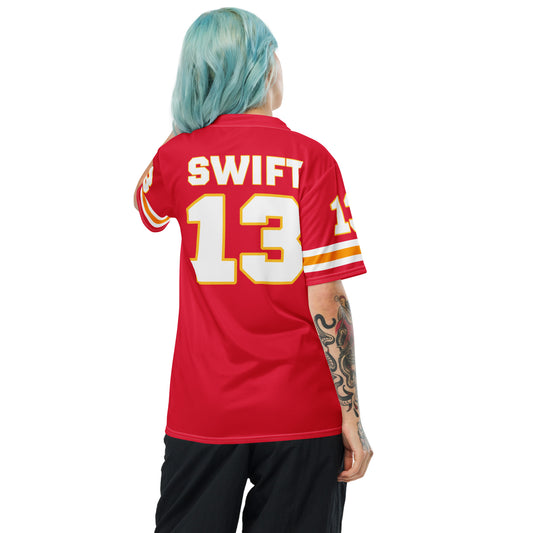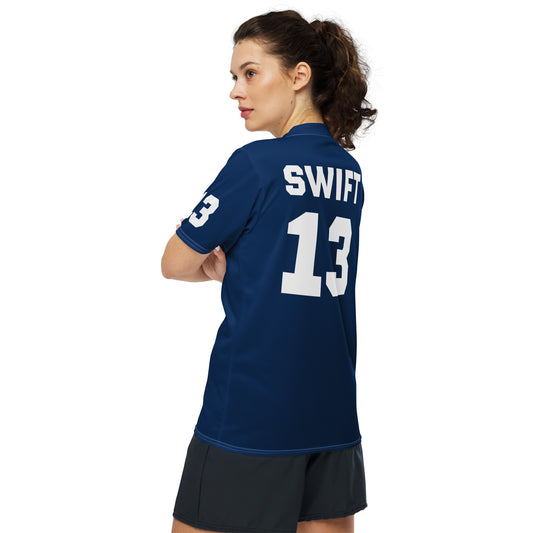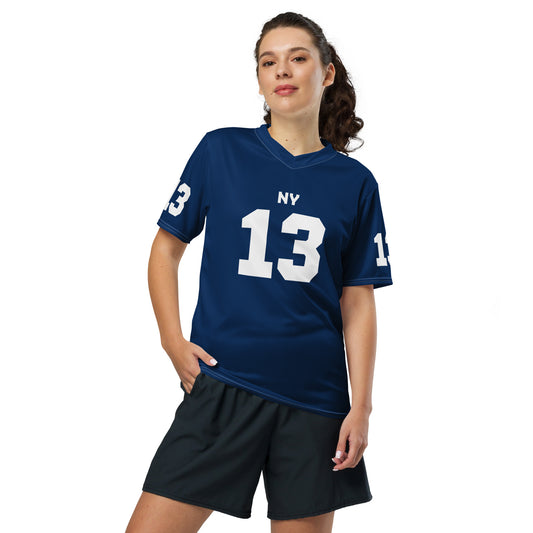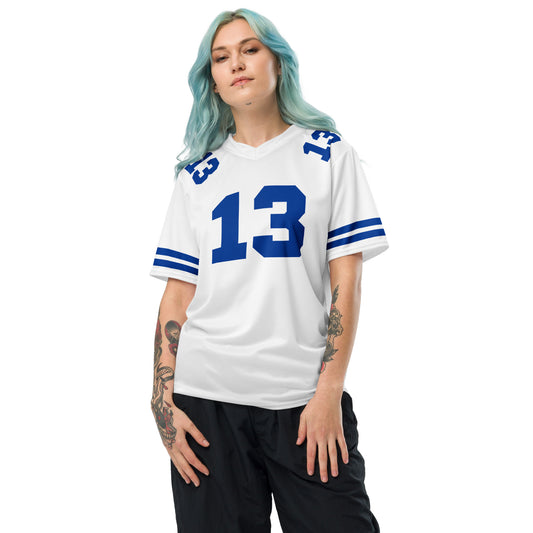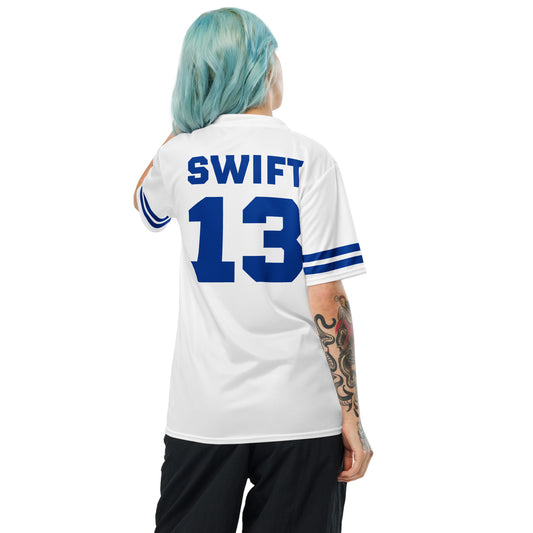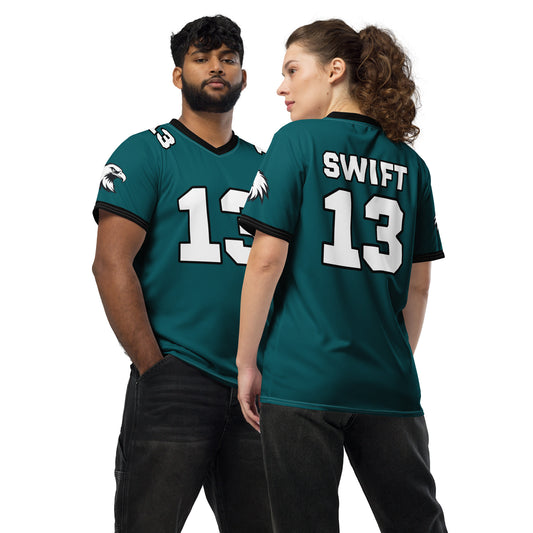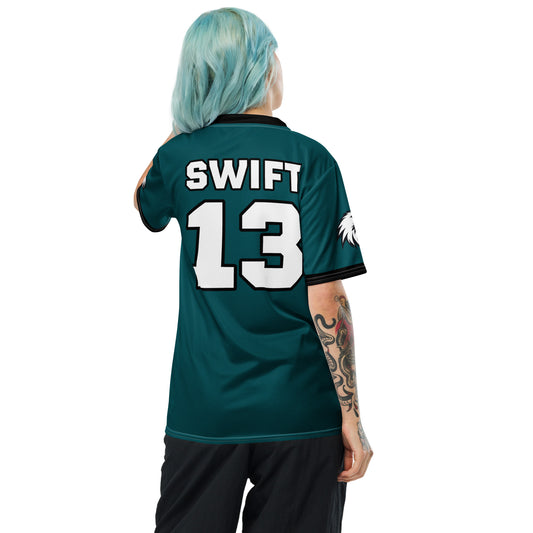
How a Florida couple “flipped” their way to a 6-figure income
Rob and Melissa Stephenson make a full-time living by scouring flea markets for discarded items — baby strollers, forklifts, prosthetic legs — and flipping them for a profit on eBay.
When you hear the word “flipping,” you might think of renovated houses, big upfront investments, and scammy YouTube ads.
But most flippers — folks who buy and resell any item for profit — are part-time hustlers who scavenge thrift shops, yard sales, and local flea markets for secondhand gems that they can resell on global online platforms.
These “gems” can be anything: clothes, shoes, antiques, electronics, musical instruments, records, machinery, tools. The art form is in finding and identifying an undervalued asset.
In recent months, flipping has seen something of a renaissance.
As US unemployment claims surpass 40m, more people are scrounging for income. For those of us still working, the shuttered economy has led to a sharp increase in online shopping — particularly on eBay and other platforms that specialize in used merchandise.
How exactly does flipping work? Where can good deals be had? And is this really a sustainable way to make money?
To answer these questions, The Hustle spoke to Rob and Melissa Stephenson, who run the popular blog Flea Market Flipper. In this post, we’ll tell their story and share some actionable tips you can use to give flipping a try.
A flipper is born
Rob Stephenson was first introduced to flipping as a 16 year old.
Every Friday night, his family would get out the local paper and “circle all of the good-looking sales” near his home in Orlando, Florida. The youngest of 7 siblings, he’d accompany his mom to yard sales and Salvation Army auctions, scavenging for discounted strollers and baby clothes.
By the time he was in his 20s, Rob was buying old NordicTrack ski machines for $15 or $20, cleaning them up, and reselling them for a few hundred bucks a pop.
“I started realizing I could actually make some pretty good money on the side,” he says. “It was a really small investment for what was, at the time, a huge return.”
In 2007, Rob met Melissa, who was then working as an equestrian performer at Arabian Nights, a dinner show in Orlando. The two fell in love, married, and had kids; Rob found full-time work taking pictures of houses for an insurance company.
For the next decade, Rob kept flipping as a side hobby, bringing in as much as $42k in sales per year.
“I made enough flipping to pay for all our travel — trans-Atlantic cruises, a trip to Ireland,” he says. “If we wanted to go somewhere, I’d just go out and flip, like, $3k or $4k worth of treadmills.”
But in 2016 — right as the couple was expecting their 3rd child — Rob’s company cut health insurance. Melissa, then a personal trainer, was unable to work. Together, they sat down and formulated a plan.
“I had never really thought of flipping as a viable [full-time] profession,” says Rob. “But we’d made crazy money on these short spurts. I thought, ‘If we really hustled with this, could it work out for us?’”
The economics of full-time flipping
During their first year as full-time flippers, Rob and Melissa made $133k in sales — after expenses, about what they were making combined when employed full-time.
In the years since then, the couple’s sales volume from flipping has fluctuated — $64k (2017), $85k (2018), and $79k (2019) — but they’ve pivoted to selling a how-to flipping class, which now brings in an additional ~$150k per year in revenue.
How, exactly, do these numbers break down? Here’s a look at the couple’s full 2019 flipping revenue (not including their course).
Of the $79k in sales the Stephensons made in 2019, just under $17k went toward overhead costs: $6.4k for the cost of goods, $5.7k on fees (eBay takes 10% of the total sale amount, and PayPal takes 2.9%), and $4.9k on shipping.
This left them with a total profit of $62,075 — higher than the median household income in the US, and enough to finally pay off their credit card debt.
To make this money, the couple flipped 90 items. This means that, on average, they paid $71 for an item and sold it $878.
The Stephensons are a bit atypical in their approach to flipping. Instead of going for a high volume of small sales, they set their sights on higher-priced items that they can get at least a 10x (and/or a $300) return on.
When browsing flea markets and local online postings, Rob will look for big commercial machines, like pallet jacks and boom lifts, which others might shy away from. He then leverages his truck, trailer, and shipping connections to pick up and quickly sell them.
Rob also searches for items that aren’t desirable in local markets but might be desirable to some of eBay’s 167m global active users.
Over the years, this strategy has resulted in some epic finds.
His priciest purchase to date — a $5k parking lot security booth he procured at a Disney auction — was sold to an attorney in Texas for $25k.
A few years ago, a scrapper Rob often works with tipped him off that a local dealership was getting rid of a 10’x14’ Harley Davidson sign. He paid $250 for it and sold it on eBay for $9k. After building his own pallet for it ($200) and shipping it via freight from Florida to Utah ($1.5k), he made out with ~$7k in profit.
Another time, he came across a Sleep Number mattress for $60 at a local Radisson hotel on Craigslist. When he went to pick it up, the hotel told him they were selling 60 — so he bought them all.
He was able to sell them for an average of $605 each on eBay, good for $25,680 in profit after expenses (the buyers paid for shipping).
Then, there are the truly bizarre finds — a bondage chair (bought for $20, sold for $450), a 1900s pump organ ($75; yet to be sold), a life-size Captain Morgan statue (passed).
The one that takes the cake, though, is the Ottobock prosthetic leg Rob found sitting on a table at a flea market. Locally, it wasn’t attracting much attention; online, it was an in-demand medical apparatus. He bought it for $30 and flipped it on eBay in less than an hour for $999, good for a 3,333% return.
“Nobody is going to buy a prosthetic leg at a local flea market,” says Rob. “ But there are a ton of people out there who need it. You just have to get it in front of the right eyeballs.”
Flip tips
Pre-pandemic, the couple generally spent 2 hours per week grazing through flea markets, another 2 hours scanning online apps for local deals, and 10-15 hours cleaning, fixing, posting, and shipping items.
Rob is fond of saying “the money is made in the buy,” meaning the most important part of the process is finding a good deal to begin with. He relies on a few sources:
- Local online markets: OfferUp, LetGo Facebook Marketplace, Craigslist
- Discount markets and stores: Yard sales, flea markets, thrift stores
- Trash: Dumpsters, free stuff people throw out
His favorite event is 127YardSale, an annual 690-mile-long yard sale that stretches from Alabama to Michigan. But he finds the bulk of his goods through 10- to 15-minute daily browses of the local marketplace apps.
Years ago, when Rob first started out, he’d have to take a lot more blind risks on items he didn’t know the value of. Today, his smartphone eliminates these gambles.
“You can research everything right on the spot,” he says. “If I see something I like at a flea market, I check out the model and make, walk away, and look it up on eBay on my phone to see what it goes for. If I like what I see, I go back and negotiate with the vendor.”
With that prosthetic leg, for instance, he was able to look up the make and model, check closed auctions on eBay, and determine the value of what he was looking at.
For first-time flippers, Rob recommends following two basic rules:
- Start with what’s familiar to you
- Start with small purchases (<$30)
“Everyone has a market they know really well,” says Rob. “If you’re a mechanic, you know that a Snap-On wrench is worth 10x a Craftsman, so start with tools. If you’re a hairstylist, start with curling irons.”
It doesn’t take gargantuan machines to make a little money flipping. Some of the best profits, says Rob, can come from low-cost items in the $10-$20 range — particularly, things that are just lying around the house.
One of Rob’s students, a geriatric nurse and mother of 6, has made $2,165 in sales over the last 4 months selling stuff she wasn’t using in her home. Her sales are modest — $90 for a Flavorwave oven, $130 for cosmetics, $15 for an old Coach purse — but the extra income has helped during tough times.
On occasion, Rob and Melissa like to subject themselves to a challenge:
- Buy an item locally for $25 or less.
- Resell that item through an online platform for a profit.
- Reinvest the profit in another item(s) to resell.
- Continue this cycle and see what you can turn your $25 investment into.
Last year, they found a chair for free on the sidewalk and sold it on Facebook Marketplace for $50. They reinvested that $50 in 2 exercise bikes, which they sold for $499 each on eBay. Four months later, they’d turned the chair into $11k in cash.
A few other general tips that help the couple successfully flip:
- For flea markets and yard sales: 1) Always bring cash, 2) Focus on smaller vendors, 3) Talk to everyone you can, and 4) Set a budget in advance.
- Appliances like electric cooktops generally yield good returns.
- The best time to post something for sale on eBay is from 8-11 pm EST on Sunday and Thursday nights.
- Algorithms love consistency. The more often you use a platform, the more often people will see your items.
- Use uShip, or another online marketplace for local freight providers, to minimize shipping costs. (Rob works with a logistics company that charges less than $300 to ship large items from Florida to Washington state.)
A good side hustle — with measured expectations
Flea Market Flipper is one of hundreds of flipping blogs — and it operates in a space rife with snake-oil salesmen, many of whom make grandiose claims about income potential.
Rob and Melissa try to be transparent with their numbers and encourage the 600 flippers currently enrolled in their $497 course to formulate realistic expectations.
In a private Facebook group for their students, they celebrate every sale as a win, from the $10 coffee mug to the $2k air compressor.
In a private Facebook group for their students, they celebrate every sale as a win, from the $10 coffee mug to the $2k air compressor.
“Flipping probably won’t make you a millionaire,” says Rob. “But it can be a great way to make some money on the side.”
There is no “typical” flipper. The Stephensons’ community is made up of cleaners, cashiers, salespeople, chemical salesmen, insurance agents, math teachers, nurses, pawnshop owners, engineers, realtors, and retirees.
Some flippers in the community have grown their sales to more than $50k in the span of a year; others bring in less than $100 per month.
Marion (who, like several other people we talked to, asked us not to use her last name) has been flipping items for a little over a year. A house cleaner by trade, she’s been out of work since the pandemic began and flipping has floated her through the crisis.
To date, she says she’s made somewhere in the neighborhood of $15k-$20k flipping clothes, bedding, and designer handbags — some of which she’s procured for free from one of her cleaning clients, a “high-powered Fortune 500 executive.”
“Online sales have been crazy, crazy, crazy,” she told The Hustle. “For a lot of Amazon items, shipping takes 2-3 weeks. On eBay, we can send it out in a day or two, so I’m selling to a lot of new eBay users.”
Flip ‘til I die
Rob and Melissa have seen a similar boom in the flipping market during the pandemic.
In the last 90 days, they’ve sold 32 items on eBay for a total of $18,355. This included 2 printers (bought for $30 each, sold for $600 each), 8 hydraulic pole saws (bought for $50 each, sold for $700 each), and a set of trailer tires (free, sold for $700).
There is a certain level of skill involved in flipping, gleaned through years of experience, relationships with vendors, and knowledge of the resale market.
But Rob insists the trade “isn’t rocket science” and that anyone willing to put in a little time and effort can see modest results.
“I don’t have a college degree, and I’m not the smartest guy on the block,” he says. Flipping is just what I feel I was created to do, and I’ll do it for the rest of my life.”
#swapmeet #flipper #ebay #sell #sales #antiques #antique #finderskeepers #garagesale #forsale






















































